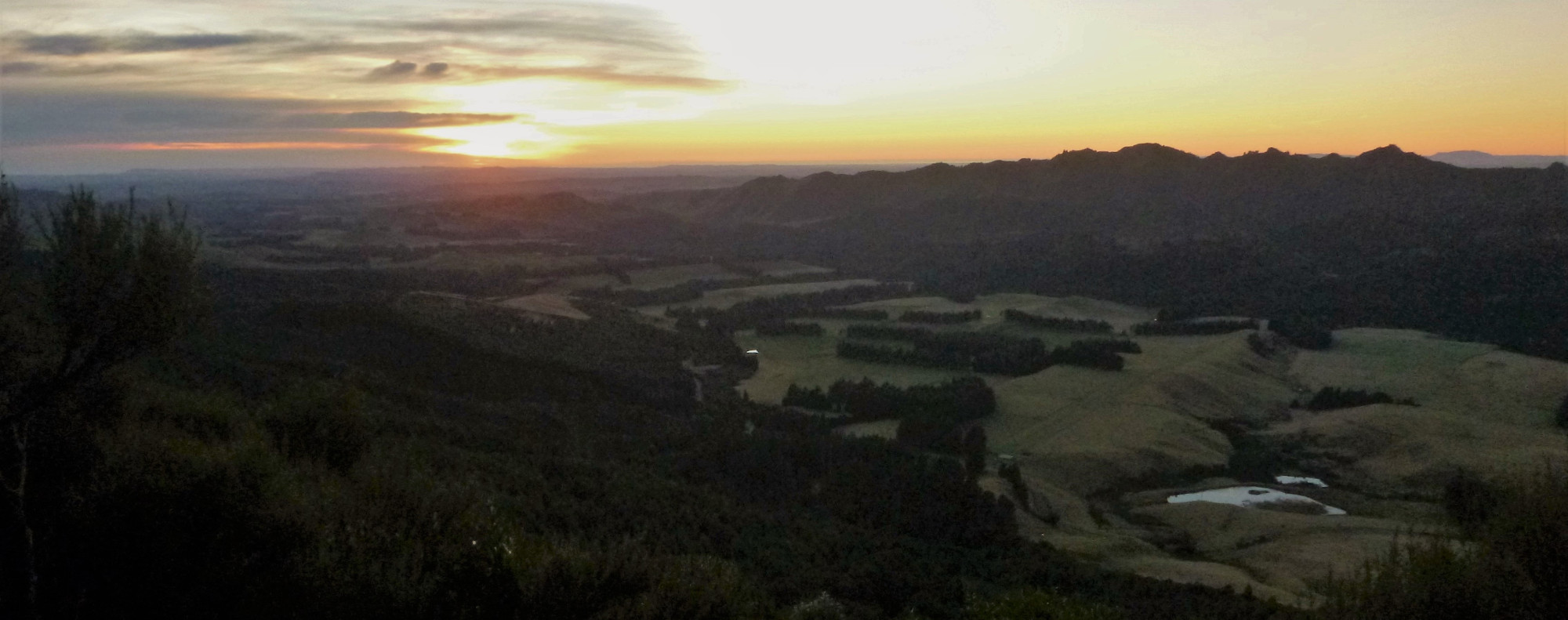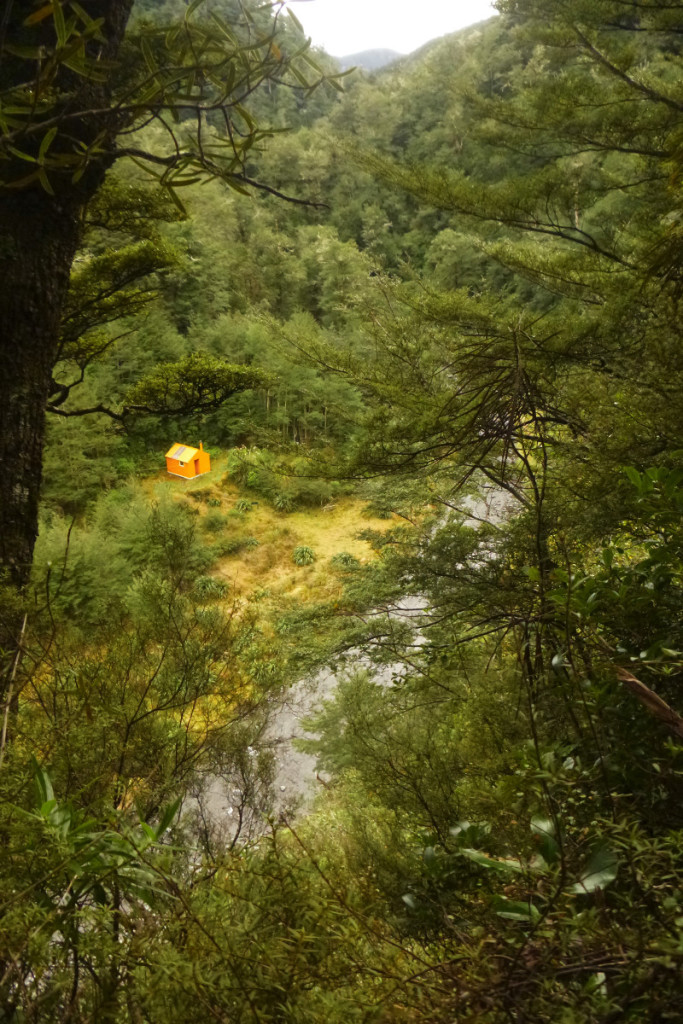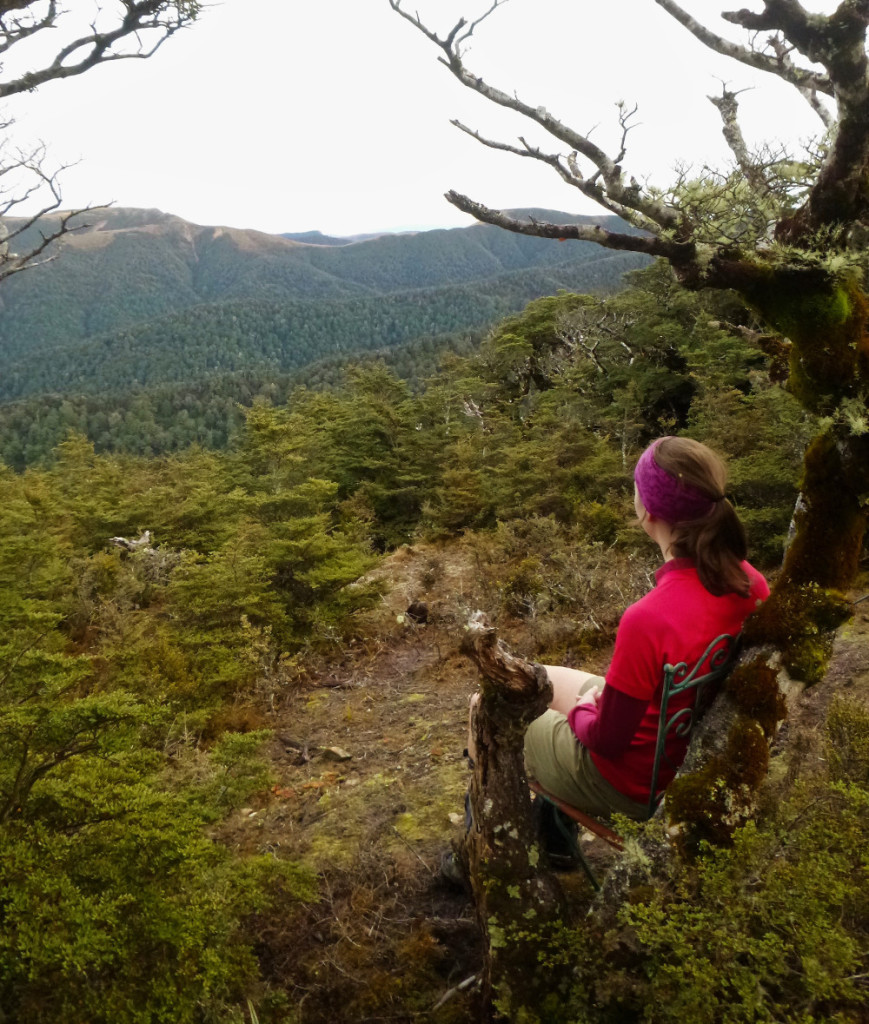In late June four of us headed up to the Ruahines to tend to the WTMC trap line. The tramping club adopted the line in early 2015 and it forms a circuit, with another line, to enclose a section of the Makaroro River where Whio (Blue Duck) live. The idea is to visit the line around once per month to rebait and reset all the traps. In this way stoats, ferrets, weasels and rats are kept low in the blue duck habitat.
It was a fairly long drive up on Friday night, but Sentry Box hut is only 10minutes from the road end so we were quickly tucked up in our bunks. Our plan was to split into two groups and cover the whole trap line on Saturday finishing at Upper Makaroro Hut. There is a river crossing just before the hut. With rain forecast on Saturday night we wanted to give ourselves all of Sunday to get out allowing some contingency in case river levels rose with the rain.
On Saturday we climbed together from Sentry Box to the ridge, then split into our teams at the top. It’s a steep climb and a shock to system first thing in the morning, but the pastel coloured sunrise warmed our souls.

After a quick trapping tutorial, Amanda and Michael set off towards Aranga Hut and myself and Gareth headed of to Upper Makororo. Gareth and I didn’t attend to any traps on the way to Upper Makaroro as Amanda and Michael were going to cover all those, so we were fast and arrived at the hut by around 11 or 11.30am. Upper Makaroro is a lovely spot – a classic river flats hut.

We lunched in the hut, deposited some kit and then set off to do all the traps up the Totara Spur behind the hut. This is another steep ascent, but we’d picked this option because we wanted to get out on the tops and enjoy the view. Unfortunately (or fortunately?) there were no pests in the traps, but we completed the rebaiting and reseting in good time and were able to lounge for a few minutes in the top of the 1503m un-named peak and soak in the vista before the steep descent back to the hut. We admired the Totara trees. We were back at the hut by around 4.30pm, and were pretty happy with our speed given the amount of ascent and descent on the route.
Amanda and Michael had covered all the traps along the main ridge from the Aranga Junction along to Parks Peak and down to Upper Makaroro Hut. They’d made it to the hut in super fast time arriving at 2.30pm, so had had plenty of time to restock the wood pile and get a good fire going. They’d also had more trapping outcomes than us with two stoats and a rat in their section of line. A much deserved cup of soup and by chirizo pasta followed. Gareth and I were on pudding duty and had brought along a chocoloate concoction given to us by a tramper in Bungaree Hut on Stewart Island (it’s a long story). Whilst the chocolate concoction looked really good, we all agreed it was actually pretty horrible and we found it hard to stomach. The moral of this story is ‘don’t accept free chocolate puddings in Stewart Island huts’. Should you ever find yourself in that situation, just refuse.
At dusk the Whio gave us a fly by and sung out a ‘Whi-ooooo’ thank you to us for helping to protect them.
The overnight rain was not as heavy as feared. In the morning the Makaroro River was easily crossable. We were all pretty speedy and made it out for lunch in Sentry Box before the drive home. We even cleared out some rubbish and beer bottles from Parks Peaks hut (…. and had a cathartic group grumble about the state it had been left in).

A nice little follow on to this trip: my niece in the UK had to do homework on an endangered species and picked the Blue Duck. She wrote an article on Blue Duck and proudly included how here auntie helps to protect the species by assisting with maintenance of a predator trap line. So there is now a whole class of 9 year old school kids in Bristol who know all about Blue Duck in the Ruahines.
I hope this trip has inspired you to help out with the WTMC trap line. Look out for ‘Intro to trapping’ trips on the schedule if you would like to become involved.
